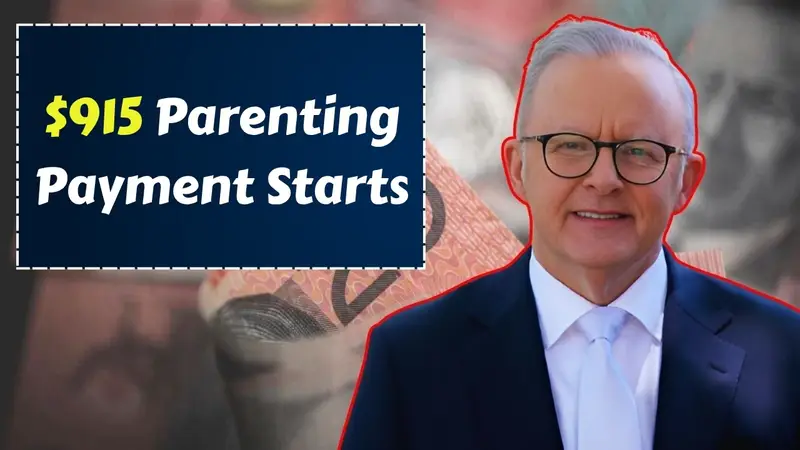$915 Parenting Payment: Big changes are coming this July for Australian families, especially single parents and low-income households. The federal government has rolled out a significant boost to the Parenting Payment, increasing it to $915 per fortnight for eligible single parents. This initiative aims to provide greater financial relief to parents caring for young children while navigating the rising cost of living.
Here’s a breakdown of what this update means, who qualifies, and how it may affect your household budget.
What Is the New $915 Parenting Payment?
The Parenting Payment is a fortnightly income support designed for parents or guardians who are the primary carers of young children. As of July 2025, the payment has been increased to $915 per fortnight for single parents, which now includes:
- Base payment
- Pension supplement
- Energy supplement
For partnered parents, the payment is slightly lower and depends on combined household income and circumstances.
This increase is part of a broader federal strategy to support families under financial pressure, especially in the wake of inflation, housing costs, and childcare challenges.
Updated Eligibility Criteria for 2025
While the age limits for dependent children remain unchanged, some income rules have been revised to provide more flexibility:
- Single parents must be caring for a child under 8 years of age.
- Partnered parents must be caring for a child under 6 years.
In addition to these age limits:
- The income-free threshold for single parents has been increased, allowing them to earn a bit more before their payment starts reducing.
- This change is particularly aimed at helping parents return to part-time work without losing immediate financial support.
How Income and Assets Affect the Payment
For single parents:
- Payments begin to reduce once income exceeds $212 per fortnight.
- However, the taper rate is designed to be gradual, so recipients don’t lose support too quickly.
For partnered parents:
- A combined income limit applies and has been slightly increased to reflect cost-of-living adjustments.
- Asset thresholds remain the same as other Centrelink payments, but those in exceptional financial hardship can request a review or exemption.
These updates aim to strike a balance between encouraging workforce participation and providing essential financial security for caregivers.
Do You Need to Reapply?
Good news current recipients don’t need to reapply.
If you’re already receiving the Parenting Payment, the $915 rate will be applied automatically, assuming your eligibility remains the same.
However, Services Australia recommends:
- Keeping your MyGov and Centrelink details up to date, especially income and care responsibilities.
- If you’re applying for the first time, you can do so online or at your local Centrelink office. You’ll need to provide documents such as proof of care, income details, and possibly residency status.
More Than Just a Payment
This isn’t just about money. The Parenting Payment is also about supporting the emotional and physical well-being of families, particularly single mothers who carry the dual weight of caregiving and financial responsibility.
By raising the maximum payment to $915, the government is signaling its commitment to:
- Relieving pressure on working parents
- Encouraging early childhood development through stable home environments
- Supporting workforce transitions for parents seeking part-time or flexible employment
At a time when childcare costs, housing affordability, and general living expenses continue to rise, this payment increase could offer much-needed breathing room.
Final Thoughts
The July 2025 Parenting Payment update brings both financial relief and renewed hope to many families across Australia. Whether you’re already receiving support or considering applying, it’s essential to understand how these changes affect you.
Stay informed, update your details with Centrelink, and explore whether you now qualify under the revised rules. The $915 fortnightly support could make a real difference in balancing parenting and financial responsibilities exactly when it’s needed most.














